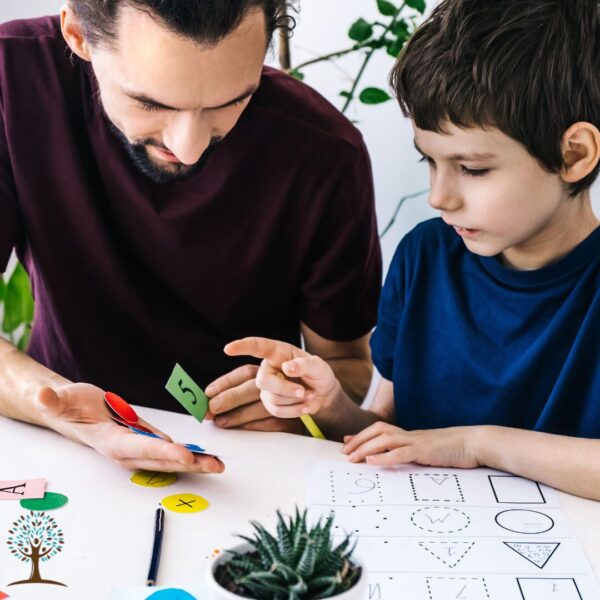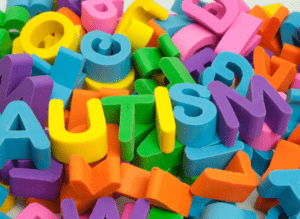
Anxiety Types You Shouldn’t Ignore
Understanding Anxiety: The Most Common Types Explained
Anxiety has a way of slipping into your day or hijacking your thoughts before you even notice it showing up… tightness in your stomach, a mind that won’t slow down, or a feeling you can’t quite explain. It becomes easy to label everything as “just my anxiety,” even when you’re not fully sure what’s causing it.
You know something’s off. You feel it physically, emotionally, mentally but the source feels fuzzy, maybe even completely undetectable. If that sounds like you, you’re far from alone. Anxiety isn’t just one single experience; it has different flavors, different triggers, and different ways of hijacking your mind and body.
Understanding the type of anxiety you’re dealing with can help you feel less overwhelmed and more in control. What if I told you that once you can name it you can actually respond to it… instead of feeling like it’s running the show.
Let’s walk through the major types of anxiety, how each might show up in your day-to-day life, and how to regulate in the moment when it hits.
1. Generalized Anxiety (GAD): The Constant “What If”
GAD isn’t loud or dramatic, it’s subtle, steady, and persistent. It’s the type of anxiety that makes you worry about things that haven’t happened yet… and may never happen.
It may feel like:
- A constant sense of dread or unease.
- Overthinking every scenario.
- Feeling tense for “no reason.”
- A mind that just won’t shut off.
Maybe you’ve had moments where you think, “Why am I stressing about this? It doesn’t even make sense.” That’s GAD’s signature move… making everything feel like it could go wrong.
Tips to Regulate :
- Name the worry: Say, “This is my anxiety talking right now.” That simple separation helps your nervous system calm down.
- Take a breath: Inhale 5 seconds, hold 5, exhale 5.
- Ask yourself: “Is this a problem I need to solve, or a fear I need to soothe?”Most GAD spirals fall into the second category. Which means pause and let the wave pass instead of trying to solve it.
2. Social Anxiety: The Inner Critic Turned All the Way Up
Some people think of social anxiety as just being shy, but it’s deeper than that. It’s the fear of being judged, disliked, or “messing up” socially, paired with the frustration of wishing you could relax, be yourself, and connect the way you want to.
It may look like:
- Replaying conversations long after they’re over.
- Avoiding phone calls, events, or speaking up.
- Feeling physically sick before social interactions.
- Believing others are noticing every tiny thing you do “wrong.”
If you’ve ever walked away from a conversation thinking, “They probably think I’m weird,” or avoided an event altogether due to the reasons above, social anxiety has likely been in the driver’s seat.
Tips to Regulate:
- Shift the focus: Instead of “How am I coming across?” try “What’s one thing I’m curious about right now?” Curiosity softens self-consciousness.
- Shift your attention outward: Scan the room for something to focus on other than the internal dialogue that’s focused on perceived judgement.
- Challenge the assumption: Ask yourself, “What evidence do I have that they’re judging me?” Spoiler alert: there’s almost always none.

3. Panic Anxiety: When Your Body Hits the Alarm Button
Panic anxiety is intense and fast. It’s like your body slams on the gas pedal before your mind realizes the light turned green.
It can feel like:
- A racing heart
- Shortness of breath
- Chest tightness
- Feeling like you’re losing control
- Feeling like something terrible is about to happen
- You may think, “Something’s not right. Why am I losing control of my body?”
Panic is your nervous system misunderstanding a stressor as a threat. This is your fight-or-flight system kicking in before your brain can catch up.
Tips to Regulate:
- Ground your body first: Sit down, plant your feet, press your hands gently together.
- Sip cold water or run cold water on your wrist: This signals safety to your nervous system.
- Lengthen the exhale : Inhale for 4, hold for 6, exhale for 8. Longer exhales deactivate panic.
4. Phobia-Based Anxiety: The Fear That Feels Bigger Than You
This is an intense fear of a specific thing; flying, driving, needles, insects, elevators, storms… anything your brain has labeled as “dangerous.” You might think, “I know some people do this everyday and come out okay, but just thinking about it makes me tense up.” That right there is phobia anxiety, your logic says one thing but your body says another.
Phobia anxiety often comes with anticipatory stress; the dread doesn’t just show up in the moment, it builds in the hours or days leading up to it. You might find yourself avoiding certain places, activities, or even conversations, all to prevent the panic from happening. People often dismiss phobias as “just a quirk” or “irrational fear,” but the physical and emotional reactions are very real. Your body doesn’t negotiate with logic… it reacts first, fast, and fiercely.
Tips to Regulate:
- Gradual exposure : take micro-steps to exposure, if it’s flying, visualize yourself sitting on a plane before take off, then watch a video of a plane first; if it’s spiders, look at a photo for 30 seconds. And regulating yourself in the moment while taking small steps, this will gradually teach your nervous system to feel safe.
- Have a recovery plan just incase panic spikes – having a plan gives you comfort that you’ll have something to lean on if you were to panic.
- Use a grounding object: (stone, bracelet, scent) to bring you back to safety cues.
5. Health Anxiety: When Every Sensation Feels Like a Warning
Health anxiety shows up as constant worry that something might be wrong with your body. You notice every twinge, pulse, or ache and your mind jumps to worst-case scenarios: “What if this is serious?”
Whether this is just from the anticipation of something being wrong or based on a legitimate diagnosed concern, anxiety can amplify it, making your body feel like danger is immediate. The key is learning to manage fear without ignoring real issues.
Tips to Regulate :
- Limit symptom-checking and googling : this creates rumination of the negative.
- Validate, then act: If a symptom is new, worsening, or unusual, schedule a check-up.
- Shift focus from “what if” to “what now”: Ask yourself, “What can I actually do right now?” Anything beyond that is worry, not action.
6. Situational Anxiety: Stress Triggered by Specific Life Events
The type of anxiety that shows up in response to a specific situation or event… think job interviews, public speaking, exams, or even a big life change. It’s that knot in your stomach, racing thoughts, or sweaty palms that flare up right before or during a moment you know matters.
Let’s be real, you brushed off your own anxiety because “it’s normal.” It’s not constant, and it’s not about overthinking everything all the time. But it still matters. And the tricky part is… Sometimes the fear sneaks in early, hours or days before the event, and suddenly a normal situation feels more stressful than it really is.
Whether it’s…
- Starting a new job
- Moving
- Financial decisions
- Relationship changes
- A big upcoming responsibility
This type of anxiety is tied to something real, and the emotional reaction can still feel overwhelming.
Tips to Regulate:
- Break the situation into smaller pieces : Overwhelm decreases when tasks feel more manageable.
- Journal : writing is a form of release, dump every fear onto paper so your mind doesn’t have to hold it.
- Remind yourself: “I don’t have to be perfect, I just have to do my best.”
Here’s where you take back the narrative…
When you can recognize what kind of anxiety you’re experiencing, you can finally start responding with the right tools instead of feeling defeated or confused.
And maybe, just maybe… This is why therapy has been on your mind lately. You’ve had moments where you thought about talking to someone, but life got busy, or you weren’t sure where to start, or perhaps a part of you hoped things would just “settle down.” This is your reminder to prioritize you.
Therapy helps you understand where your anxiety comes from, how it shows up in your body, and how to stop feeling controlled by it. You don’t have to figure this out alone. You deserve support, clarity, and a sense of peace, and therapy is one of the safest places to find exactly that.
Please be advised that the information provided in this blog does not serve as a clinical diagnosis for you. Please seek mental health support for any direct diagnosis needs.
Learn More

Protecting Your Peace
Protecting Your Peace: 6 Areas Where Boundaries Set You Free
Do you find yourself constantly saying “yes”, even when every fiber of your being is screaming “no”? I imagine you even pride yourself on being dependable, nurturing, and available, but… somewhere deep down, it leaves you exhausted, resentful, and unseen.
Perhaps you’re a people pleaser, so the word “no” feels like rejection, not of the request, but of you. Subconsciously, you may believe that your worth is tied to earning approval and love by being accommodating. Ultimately, here’s the truth: people-pleasing has never been an act of love. It’s been an act of survival. It’s the way your nervous system learned to keep you safe. The perception that if I can “make them” happy, I’ll avoid negativity in connections.
What if I told you that the entire time your priority has been pleasing everyone else, you’ve been abandoning yourself? True peace requires protection. And that protection comes through boundaries. Boundaries are the bridge between self-respect and connection. They say: “I can love you and still honor me.”
Let’s explore 6 areas where setting boundaries
Protects your Peace…
and what it looks like to start.
1. Emotional Energy
Why it matters: When you take on everyone else’s emotions.. their pain, chaos, or negativity you disconnect from your own inner calm. Without boundaries here, you might feel responsible for fixing everyone’s feelings, leaving your own neglected.
When you take on everyone else’s emotions.. their pain, chaos, or negativity you disconnect from your own inner calm. Without boundaries here, you might feel responsible for fixing everyone’s feelings, leaving your own neglected.
What lack of boundaries looks like:
You absorb people’s moods like a sponge. Someone’s bad day becomes your bad day. You overextend yourself emotionally, thinking, “If they’re okay, then I’ll finally feel okay.”
Setting boundaries looks like:
“I care deeply, but I can’t carry this for you.”
Or, “I’m here to listen, not to fix.”
Protecting your emotional energy also means learning when to pause, not every emotion you witness is yours to hold.
2. Time and Availability
Why it matters:
Time is one of your most valuable forms of currency. Without time boundaries, you teach people that your time… and therefore your peace, is always up for grabs.
What lack of boundaries looks like:
You overbook yourself, cancel your own plans, or say “I’ll squeeze it in” when you’re already running on fumes. You feel guilty resting, as if downtime has to be earned.
Setting boundaries looks like:
“I’m unavailable after 8pm” “I’ll get back to you tomorrow.”
“I’d love to, but I don’t have the capacity this week.”
Every minute of time past your boundary is a contribution to burnout.
3. Digital Boundaries
Why it matters:
We’ve all heard the phrase “comparison is the thief of joy.” And let’s be clear… comparison quite literally is the thief of joy. Sometimes, scrolling on social media is the exact thing you need a break from to reclaim your peace.We live in a world where the noise never stops. Notifications, messages, endless scrolling… Our phones have become both a lifeline and a drain. Without digital boundaries, your peace can easily get buried under comparison, overstimulation, and information overload.
What lack of boundaries looks like:
You wake up and reach for your phone before your feet even hit the floor. You scroll mindlessly when you’re anxious, only to feel more disconnected
afterward. You compare your behind-the-scenes to someone else’s highlight reel and wonder why joy feels just out of reach.
Setting boundaries looks like:
- Taking a social media detox.
- Setting specific times you’ll scroll.
- Muting or unfollowing accounts that trigger anxiety or insecurity.
Peace often begins where overstimulation ends.
Digital boundaries also include your screen time beyond social media.
Does it ever feel like binging your favorite TV show is the best at night when you’re supposed to be asleep? Or perhaps that’s the only quiet time you get? Understandable… but even here, boundaries matter. You can enjoy your show and honor your rest.
Try setting a timer on your TV so it turns off at the time you promised yourself you’d go to bed. That’s a boundary too.
Your mind needs stillness to process, heal, and breathe.
By creating intentional space between you and your screens, you give yourself permission to be fully present.
4. Communication
Why it matters:
Not every conversation deserves your energy. Boundaries in communication protect you from engaging in power struggles, defensiveness, or manipulative dialogue that leaves you drained and doubting yourself.
What lack of boundaries looks like:
You explain yourself over and over, hoping to be understood by someone committed to misunderstanding you. You engage in arguments that never lead to resolution, only exhaustion.
Setting boundaries looks like:
“I’m not comfortable continuing this conversation if it turns disrespectful.”
“I don’t owe a response to every message right away.” “I don’t have the bandwidth for this conversation right now, let’s revisit this at a later time”
Or even silence.
Peace thrives in clarity. You don’t have to defend what’s already aligned with your truth.
5. Relationships
Why it matters: Relationships without boundaries quickly become breeding grounds for imbalance, where one person overgives and the other simply receives. Healthy loverequires two whole people, not one rescuer and one dependent.
Relationships without boundaries quickly become breeding grounds for imbalance, where one person overgives and the other simply receives. Healthy loverequires two whole people, not one rescuer and one dependent.
What lack of boundaries looks like:
You tolerate inconsistency, chase closure, or justify poor treatment under the label of loyalty. You feel like you’re “too much” when you express your needs, so you silence them.
Setting boundaries looks like:
“I love you, but I won’t keep showing up where I’m not met halfway.”
“I can hold compassion, but I won’t carry dysfunction.”
Boundaries in relationships are not about punishment… They’re about preserving connection through respect.
6. Personal Space and Priorities
Why it matters:
When you lack boundaries in your personal space life feels cluttered, rushed, and chaotic.
What lack of boundaries looks like:
You never have alone time. Your space become overrun by others’ needs, noise, or expectations. You feel disconnected from your routines or rituals that bring you peace.
Setting boundaries looks like:
“I need time alone to recharge”
“Please knock before coming in.”
Creating personal space allows you to regulate, reflect, and reconnect with yourself.
Your peace is on the other side of your boundaries
Setting boundaries isn’t about pushing people away. It’s about drawing closer to yourself; to your needs, your peace, and your truth. Every “no” you say to what drains you is a deeper “yes” to what sustains you.
So the next time you feel guilty for protecting your peace, remember this: you’re not being selfish, you’re being self-respecting. Your peace isn’t negotiable. It’s sacred.
Learn More

Media and it’s Affect on Mental Health
Current Events Affect on Your Mental Health
It’s that moment in the day where you finally get to pause, breathe, and check your phone. You open your phone, just to check your social media accounts or maybe even the top headlines. Ten minutes later, you’re staring at a feed of disheartening stories… conflict zones, natural disasters, political strife, climate emergencies. You feel tightness in your chest, numbness creeping over your thoughts. You are now experiencing the weight of the world…literally.
The Unseen Weight of Continuous News Streams
Streaming news in real time gives us a front-row seat to global turbulence. Simultaneously, that access comes with a cost: our brains were never meant to handle never-ending, high-arousal input. Each alert, breaking headline, or urgent push notification triggers our stress response, a cascade of cortisol, adrenaline, heart-rate spikes. Over time, this becomes chronic, not episodic.
Are you familiar with the terms doom scrolling or media fatigue? This is a kind of emotional exhaustion caused by relentless information consumption. Studies show that even brief exposure to negative news can increase feelings of anxiety, sadness, and helplessness. Over the past years, research has linked frequent news exposure to higher symptoms of depression and anxiety.
One study published in Nature Human Behavior found a bidirectional loop: individuals who were already struggling with mental health symptoms were more likely to gravitate toward negative content and viewing that content, in turn, worsened their mood. Ultimately, this feedback loop can feel like you’re spiraling but powerless to stop it. (MIT news, 2024)
Why We Keep Watching Even When It Hurts

You might wonder: “Why is this so hard to break, even when I know it’s harming me?” The answer lies in how our minds are wired.
- Negativity Bias: We’re biologically programmed to pay more attention to bad news… it’s how we survive. Our brain highlights threats and risks, which means that negative stories dominate our emotional landscape.
- Uncertainty and Vigilance: In chaotic times, we cling to news as a way to feel in control, to anticipate what’s next. That urge to stay “informed” can draw us deeper into the stream.
- Reward Loops: Algorithms are built to keep us engaged. Sensational or alarming content increases engagement, so platforms feed us more of it.
Over time, your brain starts treating the news feed like a stress drug pulling you back even when you know it hurts.
When Streaming News Becomes a Wound That Must Be Healed
This constant exposure doesn’t just leave you weary it changes your mental health landscape:
- Heightened Baseline Stress: You begin to live in a low-grade state of tension. Your worries about the world bleeds into your personal life.
- Emotional Numbness: When the news is always grim, your ability to feel joy or hope can dull.
- Sleep Disruption: Late-night news checking interrupts rest, making it harder to recover emotionally.
- Increased Therapy Demand: Feeling a burning or increased desire of “I need to talk to someone about this.”
Intentional Strategies to Reclaim Your Well-Being
If you’re reading this, you’re already asking the right question: How do I protect myself without entirely shutting out relevant news? Here are practices that many clients and mental health professionals are finding useful:
- Designate News Windows
Instead of consuming nonstop, commit to one or two fixed “news check” periods daily. Give yourself permission to disengage outside those windows. - Choose Depth Over Speed
When you do get news, prefer measured articles or summaries rather than live alerts or clickbait video feeds. You’ll get context without the emotional jolt. Turn off push notifications. - “Worry Buffer Time”
After handling news, schedule ten minutes to name what’s worry-worthy, journal, process it, then move on. This helps your brain compartmentalize. - Anchor in the Tangible
Grounding practices: taking a walk, calling a friend, gardening, breathing exercises, etc. can help you step out of the loop of rumination and reclaim your body. - Media Fast or Minimalist Days
Allocate one day (or part of a day) each week to abstain from news entirely. Let that space refresh your inner resources. - Use Filters and Trusted Sources
Select a handful of reliable outlets. Turn off push alerts unless absolutely necessary. Let curated news be your gateway as opposed to relentless streams. - Bring It to Therapy
Acknowledge how certain topics affect your mood and make them part of the emotional narrative we explore together.
Why Therapy Matters
With streaming news weaving into our lived realities, emotional reactions to world events are no longer separate from personal struggles. A therapist can:
- Hold space for grief, fear, and overwhelm when friends may not have capacity.
- Help you build boundaries and regain agency over your attention.
- Work on cognitive tools to disrupt rumination when news hooks you.
- Support you in differentiating what’s within your control and what isn’t.
Therapy is like a map: it encompasses several different avenues to get you to a place of peace. The goal is for you to graciously care about the world without being consumed by it. You can stay informed, compassionate, engaged, and still protect your fragile mind.
Request to Work with a Therapist
If the weight of the world is starting to feel heavy, it may be time to lean on support. Therapy isn’t just talking, it’s how many of us learn to live in a world that never stops turning. And sometimes the most powerful activism is caring for your own human self.
Learn More

The Importance of Acceptance
Acceptance. What is the first thing you think of when you hear this word? Now think about the idea of acceptance in reference to something painful from your past. Does it land differently? Does it feel like a futile exercise? If you are like many of my clients, the idea of acceptance can feel bittersweet or downright offensive. Many people assume that accepting something means they also have to approve of it. Unfortunately, this concept often gets conflated in our cultural reference. Ultimately leaving many people ill-equipped to deal with past losses, trauma, and struggles.
Through the course of this article, I hope to bring clarity to the psychological concept of acceptance and the relief it can bring. I will also outline some practical steps to help you in your journey of acceptance. This can help you to continue to experience healing in the areas of your life where a lack of acceptance is keeping you stuck.
Defining Acceptance
Acceptance is not…
To help clarify the act of acceptance, let’s start by defining what it is not. Acceptance is NOT giving up or acquiescing to abuse, trauma, or toxic relationships. It is not weakness nor is it helplessness or hopelessness. Acceptance is not an empty spiritual platitude designed to leave its participants feeling defeated or powerless.
On the contrary, acceptance is a choice, a process chosen by individuals who recognize they are unable to move past a thing because it is not what they wanted it to be. Let me be clear, acceptance is not ignoring painful things or pretending they did not happen. Instead, acceptance is key to psychological, emotional, spiritual, and even physical freedom. Alanon teaches that acceptance is freedom and allows us to problem solve. As long as we resist the unwanted things in our lives, we often exist in a state of denial. This denial creates avoidance, anger, defeat, resentment, and, in extreme cases, disassociation.
**Disclaimer: For those of you who are currently in an abusive or controlling relationship, a victim of domestic violence, fighting a significant health issue, etc., please do not confuse what I am saying here. I am not at all suggesting that we should accept bad things or not advocate for health and change. This article is meant to address those things primarily from our past and present that prevent us from identifying solutions, taking action steps, and healing our emotions in ways that allow us to more fully participate in our present and move toward our future.
Acceptance is…

In simple terms, accepting something is acknowledging that it happened (or is happening) despite your wishes to the contrary. It’s the divorce you didn’t want, the rebelliouskid you raised to be otherwise, the dying loved one, the overlooked promotion at work. When I work with clients who are finding it difficult to move past their narrative that their situation is unfair, unmerited, or unexpected, I often gently introduce the idea of acceptance and help them to explore what this would look like for them.
The principle here is that as long as we resist acceptance, we stay blind to solutions. We are unable to process our related emotions, place healthy boundaries, set expectations, and identify next steps. In other words, without acceptance we cannot move forward into the freedom we all crave. Sometimes the best thing to say to ourselves is this: “It is what it is, despite my desire for it to be otherwise.” This statement can be followed up with questions such as, “What can I do about it? How do I want to learn from this? How do I want to be different? Can I use this experience to potentially help others?”
When to Accept
Identifying when to accept a situation can be incredibly challenging at times. I know from personal experience and from countless sessions with clients over the years that acceptance does not come easily. Acceptance often involves grief because we are coming to terms with some sort of loss and it can be hard to accept this is as our new reality. Sometimes it is the culmination of a long fight. Sometimes it is the place we arrive when dealing with the hurtful decision of another.
The concept of post-traumatic growth is one that is helpful to understanding the role of acceptance. Post-traumatic growth is a decision to learn and grow through significantly stressful or challenging situations. It is a process by which the individual changes in profoundly meaningful ways, often resulting in a greater capacity for compassion, appreciation of life, increased personal strength or insight, deeper spiritual practice, and more intimate relationships. The key to this growth, however, is an individual’s response and subsequent struggle with the hardship in question. Trauma does not, in and of itself, produce post-traumatic growth.
Once I Reach a Place of Acceptance, Then What?
Once an individual comes to terms with a situation and begins accepting, there are several next steps that become possible. Having said that, it is important to note that like grief, acceptance is not necessarily a linear process and there is no precise timeline. Sometimes we are only capable of accepting a portion of something or at least a portion of it at a time.
With acceptance, an individual is then able to:
- Process their related emotions
- Participate in the present
- Identify and set healthy boundaries/expectations
- Recognize needs and wants
- Identify solutions and problem solve
- Take action toward a healthier future
Acceptance Is a Journey
If you are struggling with acceptance, please know you are not alone. Ask yourself if you are stuck emotionally and psychologically because you have been resistant to acceptance. Then ask yourself what acceptance may look like for you in this season of your life. Obtaining support from a clinical therapist or joining a support group specific to your struggle may be an excellent way for you to start.
Written by Sarah Groff, PhD, LCMHCS
 Sarah Groff, PhD, LCMHCS has 23 years of experience working with children, adolescents, individuals, couples, and families throughout the life cycle. She is originally from the Pacific Northwest, where she earned a Bachelor’s Degree in Spanish and International Studies and then a Master’s Degree in Counseling, both from George Fox University. I also hold a Doctorate in Developmental Psychology from Liberty University. Sarah works with a wide variety of issues, including self-esteem and body image issues, grief and loss, marriage, divorce, blended families, parental alienation, infertility, and parenting. Additional areas of specialization are adoption and foster care, menopause, narcissistic abuse, and adjustment to issues specific to teens and young adults entering college or adult life.
Sarah Groff, PhD, LCMHCS has 23 years of experience working with children, adolescents, individuals, couples, and families throughout the life cycle. She is originally from the Pacific Northwest, where she earned a Bachelor’s Degree in Spanish and International Studies and then a Master’s Degree in Counseling, both from George Fox University. I also hold a Doctorate in Developmental Psychology from Liberty University. Sarah works with a wide variety of issues, including self-esteem and body image issues, grief and loss, marriage, divorce, blended families, parental alienation, infertility, and parenting. Additional areas of specialization are adoption and foster care, menopause, narcissistic abuse, and adjustment to issues specific to teens and young adults entering college or adult life.
Learn More

Parenting a Child with Autism : A Helpful Guide
Parenting a child on the autism spectrum can feel like you’re trying to piece together a puzzle with no picture on the box. Parenting can be like that in general, but when you start noticing behaviors in your child that feel different, confusing, or hard to explain, that puzzle can feel even more overwhelming. Every parent has struggled with self doubts and uncertainties on how to move forward in parenting. You’re not alone. Many parents have been right where you are.
Together, we’ll look at what autism is, how it may appear in children, and gentle ways you can support your child—and yourself—along the way.
Parenting a child with Autism is Different
Autism, or Autism Spectrum Disorder (ASD), is a neurodevelopmental difference in how a person communicates, learns, and experiences the world. It’s called a “spectrum” because autism is very different from person to person. Some kids may be highly verbal and academically advanced, while others may have significant communication challenges. The common thread is that their brain processes information in a way that can make social interaction, flexibility, and sensory experiences more challenging. Children on the autism spectrum will need some adjusted parenting approaches given their unique neurodevelopmental needs.
Key Areas Where Children with Autism May Need Support
Every child is unique, but some common areas where kids with autism benefit from extra guidance include:
- Communication & Language – Children with autism may communicate in unique ways. Some might speak later than their peers, use fewer words, or rely on gestures, sounds, or pictures instead of speech. Others may have strong vocabularies but find back-and-forth conversation, tone of voice, or body language harder to understand. Their communication often looks different, but it’s still meaningful—and with support, it can grow and flourish.
- Social Skills – Relationships can be the hardest piece to for a child on the spectrum to manage. Some simple skills such as how to start conversations, share space with peers, or navigate friendships.
- Behavior & Emotional Regulation – Children with autism experience the same range of emotions as their peers, but they may express them in different ways. Support is often needed to help them recognize their feelings and learn healthy ways to share them. Planned strategies for handling transitions, along with reducing overwhelming environmental stimuli, can make a big difference in preventing meltdowns and promoting emotional balance.
- Sensory Support – Due to the ways the brain is wired, offering sensory support can be a key helper in parenting a child who lives with autism. Occupational therapy is another key resource for sensory processing, and can help teach strategies like weighted blankets or tactile resources to help give the brain the input it needs. Other lifestyle adjustments such as noise-canceling headphones, and sensory-friendly environments are often overlooked options that should be a part of a parents tool kit for parenting a child on the spectrum.
- Daily Living Skills – Children with autism often process information, sensory input, and social expectations differently, which can make everyday tasks harder. Skills like hygiene, cooking, organizing, or handling money may not come naturally and need to be taught step by step. Repetition and reinforcement over the long run will help them to be most successful. This is an area where you are making progress even if they do not seem to be grasping it yet. Give it time!

Building Your Child’s Support Team
You are not alone parenting your child with this neurodevelopmental difference. You also should feel comfortable to surround yourself with a team of professionals that can also Think of your child’s care as a team effort, where each specialist brings a different set of tools to help your child grow. Here are some professionals who may become valuable members of your support network:
- Pediatrician or Developmental Pediatrician – Often the first step for evaluation and referrals. A developmental pediatrician specializes in diagnosing and managing developmental differences, including autism.
- Speech-Language Pathologist (SLP) – Supports children with delays in speech, language, or social communication. They can also help introduce alternative communication methods if verbal speech is difficult.
- Occupational Therapist (OT) – Helps with fine motor skills (like handwriting, using utensils), daily living skills (dressing, brushing teeth), and sensory processing challenges.
- Behavioral Therapist (often ABA provider) – Works on understanding behaviors and teaching skills in ways that encourage independence, flexibility, and coping strategies.
- Child Psychologist or Counselor – Provides support for emotional regulation, anxiety, or social skills, and helps parents understand their child’s behaviors.
- Special Education Teachers & School Support Staff – Play a big role in creating and following your child’s Individualized Education Program (IEP), ensuring your child has accommodations to thrive academically and socially.
Let me guess you’re thinking “woah, that’s a lot of people”. Remember, you don’t need all of these specialists at once.
The right mix depends on your child’s unique strengths and challenges.
Last, but most importantly…You
If you’re so focused on your child that your own needs often end up last on the list, we need to change that! The truth is parenting a child with autism can be deeply rewarding, and also emotionally draining. Taking care of yourself isn’t selfish; it’s necessary.
- Find your people. Join parent support groups (online or in person) where you can share stories and resources. There’s comfort in knowing you’re not alone.
- Take breaks when you can. Even short moments, like stepping outside for a breath of fresh air help recharge your nervous system.
- Set realistic expectations. Some days will be messy, and that’s okay. Celebrate progress, not perfection.
- Seek your own support. Therapy, coaching, or counseling can give you space to process the ups and downs of parenting.
Remember, your child benefits most when you feel grounded and supported.
Parenting a child with autism isn’t about striving for perfection; it’s about showing up with patience, consistency, and compassion, even on the hard days. We’ve all heard the phrase “Hurt people hurt people”, we do ourselves and others a disservice when we don’t adhere to our own needs. Making space to rest, recharge, and care for your own emotional well-being is not only vital for you, but it also strengthens your ability to show up as the steady, grounded parent your child needs.
If you’ve made it this far in the article.. Could it be because this topic resonates with you? You are not alone. Consider reaching out to a professional just to get more clarity.
And in the meantime, remind yourself: you don’t have to have it all figured out today.
You’re doing better than you think.
Learn More

Therapy Aftercare: 5 Growth Steps
Doing “The Work”
5 Steps to Maintain Your Growth Outside of Therapy

Therapy is powerful… but it’s not the whole picture. The real magic? This happens in between sessions, in your everyday life. Whetheryou’re fresh out of therapy, taking a break, or simply navigating your own healing path, “doing the work” is about showing up for yourselfwhen no one’s watching. It’s about choosing to participate in your own growth. And while there’s no perfect formula, here are five key steps to help you stay grounded, empowered, and in forward motion outside of the therapy room.
1. Build a Self-Tending Practice (Not Just Self-Care)
Let’s go deeper than bubble baths. Self-tending means listening to what you need and responding with intention. Start with your inner world:
- Journal to process your emotions or track patterns in your thoughts.
- Read or listen to content that feeds your spirit – books, podcasts, or videos that mirror your journey or expand your view.
- Engage your body with movement that feels good, whether that’s yoga, working out, dancing in your kitchen, or just walking and breathing deeply.
Self-tending includes rest and hydration just as much as it includes turning off your phone and being still with yourself.
It’s how you remind yourself, “I matter.”
2. Stay Curious About Your Triggers
Do you ever find yourself triggered by something, but don’t understand why? Triggers aren’t just emotional landmines…they’re clues. When something (or someone) sets you off, instead of reacting automatically, pause. Ask yourself:
“What is this really about?”
“What part of me feels unsafe, unseen, or unloved?”
Use those moments as invitations to explore, become curious instead of reactive. Do a bit of research. Maybe it’s a trauma response, a nervous system flare-up, or a core belief being challenged. The more you understand your reactions, the more power you gain to shift them.
This is emotional intelligence in action. Curiosity turns discomfort into discovery.
3. Rebalance Your Life Roles
If I asked you, “Who are you?” could you answer without leaning on the roles you play in others’ lives, the career that defines your days, or the labels the world has placed on you?
Seems hard, doesn’t it? That’s the internal conditioning that your worth is external.
You’re not just a title. You’re not only a parent, a partner, a student, or an employee. There’s a “you” underneath all the roles you play and all the hats you wear. Believe it or not, that’s the “you” that matters most.
Doing the work means checking in with yourself regularly. Ask: What do I like, outside of what’s expected of me? When do I feel most alive? What dreams have I put on hold, and why? It’s about engaging in hobbies, revisiting old passions, or even trying something completely new. The goal isn’t to impress anyone or meet a standard, it’s to make space for your identity to unfold, not just in relation to others, but in genuine connection to yourself.
4. Cultivate Healthy Connections
Healing doesn’t happen in isolation. While there are moments where solitude is necessary in your growth. Building healthy connections bridges the gap between self-discovery and shared humanity, reminding you that you don’t have to do life alone.
Surround yourself with people who nourish, not drain, your energy. That might look like:
- Seeking out community spaces or support groups.
- Building deeper friendships rooted in honesty and mutual care.
- Limiting time with people who consistently leave you feeling small, unseen, or dysregulated.
Let’s face it, connecting with others isn’t always a walk in the park. Disagreements and misunderstandings happen. It’s life, we’re all a work in progress. What matters is how we handle it: taking space when needed, offering grace, owning our part, and staying open to growth. The goal isn’t perfection, it’s accountability, growth and connecting with others who are committed to the same.
Whether it’s one trusted person or a small circle, lean into relationships where you can be your whole self.
5. Make Meaning Through Mind-Body-Spirit Integration
True progress is holistic. It is likely you have discussed this in your previous therapy. It touches every part of you. So, ask: How am I aligning my inner work with my daily life?
- Spiritually, are you staying connected to something greater? That could be prayer, nature, meditation, or ancestral practices.
- Physically, are you tuning in? Is your body asking for rest, movement, nourishment?
- Mentally, are you challenging your old beliefs, replacing shame with compassion, and giving yourself permission to change?
This isn’t about perfection. It’s about presence. Reflect regularly. Ask what’s working and what needs adjusting. Small shifts lead to sustainable growth.
Keep Doing Your Best, And Don’t Give Up on You!
Therapy is a great step to release, reflect, and reframe. It even adds the skills to your tool box for you to manage things when you’re on your own. However, not doing the work outside of therapy is like spending hours touring gyms, watching workout videos, and buying fitness gear… then wondering why your muscles haven’t grown yet. Knowledge is important, but embodiment is where the change happens. You must do the work.
Some days, doing the work looks like deep self-reflection. Other days, it’s drinking water and stretching. It’s also not spiraling emotionally after a hard conversation. Either way, it counts. Doing “the work” isn’t a one-time fix. It’s a lifestyle… a practice of coming home to yourself, again and again.
You don’t have to have it all figured out to be growing outside of therapy. You just need to stay in motion, even if it’s slow.
The most empowering part is that every step counts.
Learn More

Trauma’s Impact on You
Understanding the Trauma Response
When you hear the word trauma, what comes to mind?
Perhaps you picture a soldier returning home from war, haunted by memories too heavy to carry. That image is valid but it’s also incomplete. Because here’s the truth: trauma doesn’t just wear combat boots. Trauma can wear yoga pants. It can sit at a desk job. It can raise children, scroll social media, or smile through the pain at family gatherings.
Maybe you’ve even minimized your own pain because you didn’t have bruises to show for it. Reviewing your own trauma through a lens tailored to what you thought was classified as “actual trauma”, telling yourself “I haven’t been through anything that bad. Other people have had it worse.” But hear me clearly: if something overwhelmed your ability to cope, that was trauma.
So… What Is Trauma, Really?
Trauma isn’t about what happened. It’s about how your nervous system responded to what happened. This means that your brain has taken information about an experience, and hard wired a response when it perceives any other similar events. Trauma is any experience that felt threatening, unsafe, or emotionally overwhelming, especially if it left you feeling powerless, unsupported, or alone. This could be a one-time event (like an accident), or ongoing situations (like emotional neglect, toxic relationships, or growing up in a chaotic home). It doesn’t have to be loud to be a trauma. Sometimes the quietest, most invisible wounds run the deepest.
Common Symptoms of Trauma
There’s the trauma responses you expect, and then the ones that sneak up on you, the kind that make you feel like, “Why am I like this?” Let’s start with the ones that are often linked with Post-Traumatic Stress Disorder (PTSD) or acute trauma, including:
- Flashbacks – feeling like you’re reliving the trauma, even if it happened years ago.
- Nightmares/Night terrors – sleep disturbances of fear, memory or anguish
- Intrusive thoughts that pop into your mind and won’t go away.
- Hypervigilance – constantly scanning for danger, unable to relax.
- Panic attacks – sudden surge of anxiety causing mental and physical symptoms.
- Dissociation – zoning out or feeling disconnected from your body or surroundings.
These are intense and often misunderstood symptoms.
These symptoms are your brain’s way of trying to protect you from a perceived threat,
even if that threat is no longer real.
Ways Trauma Shows Up That You Might Not Realize
What is interesting about trauma, is that you may have been working on it in therapy without even knowing it. You don’t need flashbacks or nightmares to be considered traumatized. Trauma can show up in more subtle, everyday ways. It might look like constant self-doubt or struggling with feelings of impostor syndrome. Or maybe you are questioning your worth despite evidence to the contrary.
In relationships, you may have difficulty setting boundaries or saying “no.” This then puts others’ needs ahead of your own. When counseling goals have been around feeling like you’re never enough, this could be trauma too. Other aspects of your emotional health that potentially could be trauma related is persistent fears of abandonment or rejection in relationships. Trauma can create a hyper-independent personality, who believes they can’t rely on others – because doing so has only led to disappointment. Others may feel emotionally numb, as if they’re merely observing life rather than fully participating in it. As you can see, trauma can impact you in very subtle ways.
Forms of Trauma
Did you know that trauma comes in many shapes? It’s important to recognize there’s no “trauma Olympics.” No scale of “yours counts, but mine doesn’t.” Trauma can come in many forms—whether it stems from loss, abuse, neglect, betrayal, sudden change, or even experiences that might look “small” from the outside but feel overwhelming on the inside.
- Acute Trauma – One-time events like a car accident, assault, or natural disaster.
- Chronic Trauma – Repeated exposure to distress, like ongoing abuse, neglect, or bullying.
- Complex Trauma – A mix of many traumatic experiences, often starting in childhood, that affect your sense of self and relationships.
- Developmental Trauma – Occurs during early life, when your brain and sense of safety are still forming.
- Secondary or Vicarious Trauma – When you’re deeply affected by witnessing or hearing about someone else’s trauma (common in caregivers, therapists, first responders).
- PTSD and C-PTSD – Diagnosed conditions with specific symptom clusters, including flashbacks, nightmares, and emotional dysregulation.
No trauma is “too small” to matter. Pain isn’t a competition.
Trauma Shapes our Reactions to the Present
Trauma can also impact how we react to some people and situations. Have you ever found yourself shutting down in conversations? Perhaps, you ‘re overreacting to “small” things? That’s not you being “too sensitive” or “crazy.” That’s your nervous system trying to protect you.These responses are not conscious choices but automatic protective mechanisms.
Common trauma responses include:
Fight: Anger, control, confrontation. You might snap quickly or try to stay in charge to avoid feeling vulnerable.
Flight: Perfectionism, overworking, anxiety. You stay “busy” to outrun the discomfort.
Freeze: Numbness, procrastination, zoning out.
Fawn: People-pleasing, codependency, self-abandoning, shape-shifting to be “safe” or loved.
It’s important to remember these responses are adaptive—they once served a protective purpose. It’s just that this reaction is no longer useful. Now that you see these for what they are, you are one more step towards healing.
Trauma Therapy Helps you Move Forward
With therapy and support, individuals can learn to regulate their nervous system, build healthier coping strategies, and experience a greater sense of safety. Healing isn’t about forgetting or pretending it didn’t matter. It’s about making the choice now, to finally give your body and brain the safety they needed back then. Healing from trauma is not linear, it’s a process. The most important thing to remember is.. you are not weak for being affected by what happened to you. You are not dramatic for acknowledging your pain and giving it a name. And above all, you are not alone in how you feel.
Start small. Learn to notice your triggers without judgment. Practice self-compassion, even if it feels foreign. Reach out for support, whether it’s trauma therapy, community, or trauma-informed resources. EMDR therapy, Brainspotting, or TFCBT are just a few options available to you.
And most importantly: stop comparing your pain to someone else’s. Your story matters. The body remembers. Your healing is valid…
Learn More

Stresses of College Students
The Stress of a College Student
Being back on campus can be exciting. It’s a new year with new opportunities and connecting again with friends you haven’t seen in months. But are you back on campus and already overwhelmed? Does it feel like your to-do list is growing faster than your energy? Or maybe you’re a parent, and your student seems more irritable, anxious, or exhausted than excited now that school is actually here.
Whether you’re packing for your first semester, returning to check off another semester, or knee-deep in finals, college isn’t just about classes and fun. It’s a pressure cooker of deadlines, decisions, and expectations. College can serve as such a pivotal moment in a person’s life, however, also can sometimes take a toll on one’s mental health.
Let’s Talk 10 Areas of Stress College Students Face:
1. Academic Stress and Burnout
Overwhelming coursework, constant pressure to perform, and highly competitive academic environments can quickly lead to chronic stress and burnout for college students. Many find themselves juggling intense class loads with extracurriculars and part-time jobs, all while trying to meet high expectations. Challenges like poor time management, perfectionism, and a deep fear of failure often make things worse turning everyday stress into a persistent mental and emotional weight.
2. Anxiety and Depression
If you’ve felt unusually anxious, emotionally numb, or unmotivated, you’re not making it up. Rates of anxiety and depression are higher than ever, nearly 3 in 4 college students report moderate to high stress, and 35% have an official anxiety diagnosis. Rates of generalized anxiety disorder and major depressive disorder are rising steadily among college students, reflecting a growing mental health crisis on campuses. These conditions are often triggered by a combination of factors, including social isolation, academic pressure, financial stress, and uncertainty about the future. As these stressors pile up, many students find it increasingly difficult to cope without support. Therapy addressing these issues is often critical to keep the young adult on track and successful.
3. Social Media and Digital Overload

You know that moment when you’re just “checking Instagram for five minutes” and suddenly it’s 2 a.m. and you feel terrible? Perhaps the scroll lasted so long due to “Fear of missing out” (FOMO). Social media can increase connection but also fuel anxiety, loneliness, and unhealthy comparisons. The phrase “doom scrolling” is also one you may have heard of relating to the negative emotional toll that social media can cause. Frequent use of social media without moderations often times affects self-esteem, sleep, and attention span. Counseling is sometimes considered as a way to help set better boundaries around technology when the compulsion is very strong.
4. Loneliness and Social Isolation
Many students report feeling disconnected from their peers, a trend that has become even more pronounced in the post-pandemic era. Forming genuine friendships can be especially difficult for introverted students or those navigating remote or hybrid learning environments, where organic social interaction is limited. As a result, many college students who seek out therapy are experiencing this. This sense of isolation can leave students feeling alone, unsupported, and detached from campus life.
5. Substance Use and Coping Mechanisms
Whether it’s caffeine for cramming, alcohol at parties, or weed to unwind… substance use is common on college campuses. But when it becomes a way to escape or cope, itcan quietly make mental health worse instead of better. When a college student leans into substances to cope, mental health therapy becomes critical to learn healthy coping skills. Otherwise, dependency can become a lifelong struggle.
6. Imposter Syndrome
Ever feel like you’re faking it and it’s just a matter of time before everyone finds out? You’re not alone. Imposter syndrome affects even the most capable students and can sabotage confidence, relationships, and academic performance. Many students struggle with imposter syndrome feeling like a fraud despite clear evidence of their competence and accomplishments. This is especially common among high-achieving individuals, first-generation college students, and those from marginalized backgrounds or competitive academic programs.
7. Financial Stress
Balancing tuition, books, rent, and basic needs creates major pressure. Students with financial insecurity often feel they can’t afford to take a break even when they’re struggling mentally or physically.
8. Identity and Belonging
Exploring who you are racially, culturally, sexually… can be powerful. But it can also feel isolating, especially if your campus lacks diversity or understanding. Many students navigate discrimination, microaggressions, or fear of not being accepted. Often times in the therapy world, students can learn the language for what they are experiencing. This eventually gives them the power to not feel personally at fault for the larger societal systems.
9. The Stigma around Mental Health
Students often feel like their problems “aren’t bad enough” to justify counseling or they’re afraid of what others might think. But ignoring mental health concerns doesn’t make them disappear. The stigma is fading, but it still holds many students back.
10. Sleep and Mental Health
Pulling all-nighters or crashing for four hours a night might seem like a normal part of college but sleep deprivation has serious consequences. Memory can be significantly impacted when sleep health is not addressed. Lack of sleep also affects concentration, mood, immune function, and long-term mental health.
Tired of Carrying the Weight Alone?
Let’s be real: college is one of the most important, transitional, and intense periods of your life. And while friends, mentors, and parents can offer support, there are times where you just need more.
That’s where therapy comes in.
Whether you’re trying to manage anxiety, heal from burnout, figure out your identity, or just get through the semester without falling apart, therapy gives you the tools to handle life, not just survive it.
Here’s what therapy can do for you:
- Help you understand what’s really behind your stress
- Teach coping strategies that actually work in real-time
- Offer support that’s judgment-free, confidential, and built around your goals
- Give you a safe space to talk about things you can’t say anywhere else
- Help you build routines, set boundaries, and feel more like yourself
And to parents reading this: encouraging your student to explore therapy doesn’t mean something’s wrong it means you care. Normalizing mental health support is one of the best gifts you can give them.
Learn More

Helping Your Little One Name Big Feelings
Helping Your “Little One” Name “Big” Feelings
Does your little one ever come to you in tears, without actually saying what’s wrong? Perhaps you sometimes wonder which feeling is behind those tears, is it disappointment, hurt, loneliness? It is completely normal, for children, to use words like “sad” or “mad” when they’re really feeling something deeper. For some, they have no feeling words to describe what they are going through. Children cannot have the language until we teach them. Helping them put names to their emotions is one of the most powerful gifts you can give.
Why Naming Feelings Matters
Emotion naming also known as affect labeling does more than just add words to your child’s vocabulary. It helps them feel a little less overwhelmed. Research shows that labeling an emotion reduces stress, calms the amygdala, and gives kids more control over their feelings.
Additionally, children with a solid emotional vocabulary are healthier socially, less impulsive, and more focused in school. That’s because once kids can say “I feel frustrated,” rather than just “mad,” they also strengthen their ability to regulate their emotions and communicate what they need.
Everyday Ways to Support Your Child
Narrate Your Own Emotions
Try something like: “I feel really excited because I’m playing with you!” or “I’m frustrated because I lost my keys.” When kids hear emotion words multiple times a day in different contexts, it becomes normal for them too.
Use Emotion Charts or Faces
Print or buy a simple feeling wheel or poster, this display shows feelings named and faces that can help children identify what they feel. Imagine standing in front of a chart with your child seeing happy, sad, mad, proud, worried and asking “Which face matches how you feel?” If your child points to the worried one, you might respond, “It looks like you’re feeling worried. Did something happen at school?” This visual cue helps kids connect an internal feeling with a real word.
Play Storybook Emotions
While reading a story, pause and say: “How do you think that character is feeling? Why?” When you say, “She seems proud of finishing her puzzle, have you ever felt proud like that?” your child gets practice identifying and talking about complex feelings.
Act It Out: Charades Style
Turn emotion-naming into a game! Write feelings (like excited, upset, scared) on paper, let your child act one out, and guess together. After guessing, ask, “Have you ever felt that way? When?”
Tune Into the Body
Help children link physical sensations to emotions: “Your shoulders are tight, you might be feeling worried.” Or “Your tummy is all fluttery, could that be excitement?” This body awareness trick helps them label feelings more precisely.
What About Tough Moments?
If your child is having a meltdown your approach in that situation can either escalate and deescalate the situation. Oftentimes as parents it can be easy to jump straight to discipline, resolution, or dismissing feelings as means to salvage control and quiet.
Instead, try this two-step approach:
- Pause and Breathe Together, say something like “Let’s take three deep breaths.” It may take a moment. Be patient. This can take some time as they try to get control of their breathing.
- When things calm down a bit, gently say, “It seems like you felt really frustrated or overwhelmed. Do you want to tell me about it?”
That way, you’re modeling emotional regulation and helping them find the right word in a calmer, safer moment.
The Benefits to Naming Emotions are Many
The major benefit to have a high emotional understand is Stronger resilience. When kids name feelings like “disappointed” or “left out” instead of crying or hitting, they’re better able to manage those feelings next time. Children who have the ability to know their emotions also perform better academically and report great levels of life satisfaction. Other benefits include the following:
- Better friendships: Being able to say “I feel hurt when you don’t share” helps friends understand and respect them.
- Stronger bond with you: The more your child knows you “get” what they’re feeling, the more they’ll come to you with big issues as they grow.
Feelings are our friend! The goal isn’t to avoid feelings, it’s about naming them so we can manage them better. This is the message we want you to hear, allowing your child to reap the benefits! We know you want the best for your child and their future. This is a simple skill that costs nothing and will give them continued positive opportunities!
If you feel your child needs more support in emotional recognition and communication counseling and play therapy may be a great next step. You certainly do not have to do this alone. We have seen amazing growth in children when we work with them on emotional language with the combination of understanding of their body responses. We’re here to help! Visit our Therapist Page to learn more about each provider in our practice, several of who have years of clinical experience ins upporting children and adolescents mental health.
Learn More
Kids and Screen Time: Tips for the School Year
Kids and Screen Time: Tips for the School Year
The Digital Dilemma of Parenting
Is your child glued to a screen, even when they should be doing homework or playing outside? Let’s face it, what started out as a simple way for you to keep your kids occupied while you get things done, has turned into their secret obsession with screen time. Screens are now embedded in daily life—used for schoolwork, social interaction, and entertainment. While technology can be educational, excessive screen use has been linked to sleep disturbances, behavioral concerns, and visual strain.
A recent study (Psychological Bulletin, 2025) analyzing data from nearly 300,000 children found a strong correlation between screen overuse—particularly time spent on video games—and increased social and emotional challenges.
When Tech Takes Over the Emotional Impacts are Obvious
Oftentimes, youth are more irritable, distracted, and unfocused when they have had extended periods of screentime. You’re not imagining it. Research shows that too much screen time can overstimulate the brain, leading to difficulties in focus and emotional regulation.
But here’s the good news: you have the power to help your child develop a healthier relationship with screens. It starts with setting clear, consistent limits and encouraging other activities that promote well-being.
Navigating the Detox Phase from Screens
As you begin to set new screen time boundaries, it’s normal for your child to go through an adjustment period often called a “detox” phase. It’ll start out little bumpy at first. Kids will likely be more moody, say they’re bored, or push back against the new rules. This “detox” phase is totally normal it’s just their brain adjusting to less stimulation.
The most important thing during this phase is patience, and to stick with it! Stay calm, be consistent, and offer fun alternatives like playing outside, reading, or doing something creative together. Most kids settle into the new routine within a few days or weeks, and many become more focused, calmer, and even happier.
Just like with any healthy habit, the initial discomfort often gives way to surprising benefits. Many parents find that after a few days or weeks, their children become calmer, more focused, and more engaged with the world around them.

Creating a Healthier Routine
To foster a balanced lifestyle:
- Set Clear Screen Time Limits
Establish daily screen time limits based on your child’s age and needs. For instance, the American Academy of Pediatrics recommends no more than one hour per day of recreational screen time for children aged 2 to 5 years. School age children are recommended to keep screen time at a range of 1.5-2 hours
- Create Screen-Free Zones
Designate certain areas of your home, like the dining room or bedrooms, as screen-free zones. This encourages face-to-face interactions and helps establish boundaries between leisure and rest.
- Encourage Physical Activity
Make sure your child has plenty of opportunities for physical activity, whether it’s playing outside, participating in sports, or just taking breaks to move around during screen time.
- Foster Offline Hobbies
Encourage your child to explore hobbies that don’t involve screens, such as reading, drawing, or playing a musical instrument. These activities not only reduce screen time but also promote creativity and cognitive development.
- Be a Role Model
Children often mimic their parent’s behaviors. By modeling healthy screen habits, like limiting your own screen time and engaging in offline activities, you set a positive example for your child.
- Use Technology Wisely
Leverage parental control tools to monitor and limit your child’s screen time. Apps like Apple’s Screen Time or Android’s Digital Wellbeing can help set specific time limits and ensure age-appropriate content.
- Establish a Structured Routine
A consistent daily schedule helps children transition smoothly between activities. Incorporate specific times for schoolwork, physical activity, family time, and screen time to maintain balance.
- Encourage Social Interaction
Organize playdates or family outings to promote face-to-face interactions. Socializing in person helps children develop essential communication skills and emotional intelligence.
The New School Year is Great Opportunity for New Routines
As the school year begins, it’s an ideal time to reassess your family’s screen time habits. Collaborate with your child to set realistic goals and establish routines that prioritize both academic responsibilities and personal well-being.
Remember, the goal isn’t to eliminate screen time entirely but to ensure it’s balanced with other enriching activities. By setting boundaries and encouraging diverse experiences, you help your child develop a healthier, more balanced lifestyle.
Seeking Support
Now it is time to begin….The thing that started out as a means to keep your little ones busy needs to go. It seemed great at first but you realize screentime is impacting you, your family’s harmony, and your child too! With consistent effort and clear boundaries, you can guide your child toward healthier screen habits.
If you feel you need support in managing screen time or have concerns about your child’s digital habits, professional guidance may be a great next step. Whether this looks like personal counseling for yourself or play therapy sessions for your child, you are not in this alone in this. We’re here to help! Visit our Therapist Page to learn more about each provider in our practice.
Learn More
